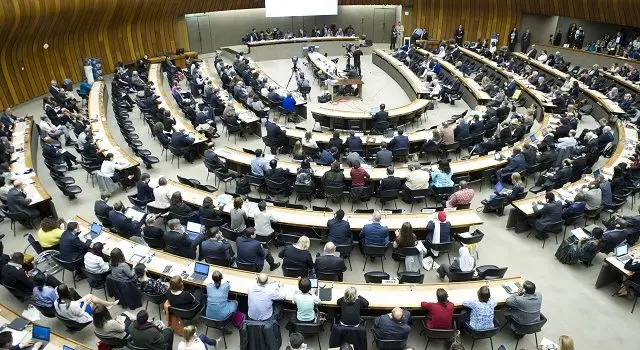The first High Level Political Forum (HLPF) on Sustainable Development, supported by the UN Economic and Social Council (ECOSOC) has recently concluded at the UN Headquarters in New York. The forum, which ran from 11-20 July 2016, was attended by nearly 1,500 Member States and other stakeholders, including the NCD community. Its purpose was to follow-up and review the progress made by Member States towards the achievement of the 2030 Agenda for Sustainable Development, and the Sustainable Development Goals (SDGs). At the HLPF, nearly one year after the launch of the SDGs, UN Secretary General, Ban Ki-moon, presented two reports which reflect on the global progress made towards the Sustainable Development Agenda, and the work still to come.
All discussion at the HLPF centred on the key theme of ‘Ensuring that no-one is left behind’, focusing on vulnerable groups – including children and youth, migrants, and women – in the context of development and security. In addition to roundtable sessions, there were 22 voluntary national reviews, thematic reviews of global progress, and a wide variety of side events to share advice and methods of achieving the goals.
Integration:
Many panelists and Member States stressed the need to integrate the SDGs in order to achieve success, agreeing that a multi- and inter-sectional approach will be essential. As many determinants of health lie outside of the health goal (SDG 3), it is important that health advocates highlight the areas of integration between all 17 SDGs and engage productively with other sectors. One example raised at the HLPF was air pollution; it currently kills 8 million people per year (many of whom die of heart disease) and also adversely affects crops, agriculture and buildings. Reducing air pollution would be an intersectional ‘win’ for the development community; moreover, the data collected while tackling the problem could be used to inform policy across all of the relevant sectors. Similarly, minimizing water pollution would help to achieve multiple SDGs. The NCD Alliance has produced an infographic to help NCD advocates to recognize these and other interlinkages between the SGDs.
During the HLPF, the NCD Alliance, alongside The Permanent Missions of the Caribbean Community (CARICOM), held a side event entitled NCDs Across the SDGs: A Call for an Integrated Approach. A summary of the event can be found here. The event focused on interlinkages between non-communicable diseases (NCDs) and broader sustainable development priorities of the 2030 Agenda, and highlighted the need and opportunities for integrated, multi-sectoral and multi-stakeholder implementation. Sir George Alleyne, Director Emeritus, PAHO, who moderated the event, stated that achievement of one goal depends on achievement of all. The challenge, he said, is how to translate the recognized need integrated implementation into tangible actions.
Other HLPF side events:
There were various other NCD-focused side events during the HLPF, including an event on the outcomes of the WHO Global NCD National Capacity Survey, and the launch of “NCDs & Me”, the WHO Global Coordination Mechanism’s new communications campaign. The ‘NCDs & Me’ campaign is a portal which invites people to share their stories. This aims to engage the public and WHO partners in a broad dialogue on the impact of NCDs, solutions, and support countries need to meet the nine global NCD targets. The campaign will show the human face of NCDs and explain cost-effective measures that can be taken to achieve the targets. Explore the ‘NCDs & Me’ portal here.
Data/monitoring:
Supporting World Heart Day’s policy ask this year, the deficit of reliable data was heavily discussed during the HLPF. Across and within countries there are huge gaps and absent data sets, and what data is available is not always comparable. The importance of reliable data was recognized and it was agreed that Member States must build capacity for collecting and monitoring data.
In line with this, the World Heart Federation is asking decision-makers to commit to the implementation of reliable, simple, and fit for purpose surveillance systems for monitoring cardiovascular disease (CVD). You can find out more information about World Heart Day (29thSeptember) and download the campaign materials here.
Member States have already made some commitments to improved monitoring and evaluation, as they will review a subset of the SDGs each year at subsequent HLPFs. We at the World Heart Federation are looking forward to the discussion of the health goal (SDG 3) which will be reviewed in 2017, under a new HLPF umbrella theme: ‘Eradicating poverty and promoting prosperity in a changing world’.


